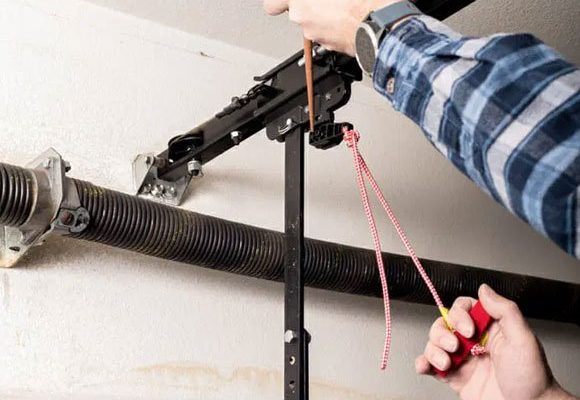
Imagine the door lever as a simple machine powered by springs, much like a bicycle gear. When the spring is broken, it’s like shifting gears without any mechanism to engage them; everything gets jammed up. In this article, we’ll walk through how to repair a broken spring in an interior door lever, focusing on common brands like Schlage or Kwikset. You’ll learn everything you need to get that lever back in top shape, so you can easily enter and exit your rooms without a hitch.
Identifying the Problem
Before diving into the repair, it’s crucial to determine if the spring is genuinely the issue. First, try toggling the lever while observing its movement. Does it feel unusually loose? Does it bounce back sluggishly? If it does, you might have a broken spring on your hands.
You can also inspect the area around the lever for any visible damage. Look for cracks or broken pieces. Sometimes, the problem could also lie in the screws or the door frame itself, so check those as well. If everything seems okay aside from the lever’s functionality, the spring is likely the suspect.
Taking a moment to assess the situation can save you from unnecessary repairs. You don’t want to fix what isn’t broken, and being thorough will make the repair process smoother overall.
Gathering Your Tools
Now that you’ve identified the issue, it’s time to gather your tools. Here’s what you’ll need for the repair:
- Screwdriver: A flathead or Phillips, depending on your door lever.
- Replacement spring: Make sure to get one compatible with your door lever brand.
- Utility knife: This can help you pry off any caps or covers if needed.
- Safety goggles: Just in case any small parts snap out while you’re working.
Having everything ready before you start is like prepping for a road trip—you want to ensure you’re set before hitting the road. If you’re missing a tool or the right spring, it might delay your repair. So, double-check your toolkit!
Removing the Door Lever
To replace the broken spring, you’ll first need to remove the door lever. Here’s how to do it:
1. Locate the screw(s): Most door levers have a visible screw or hidden screws that hold the handle in place. Use your screwdriver to loosen them.
2. Pry off the cover (if necessary): If your lever has a decorative cover, gently use the utility knife to lift it off. Be careful not to damage it.
3. Take off the handle: Once you’ve removed the screws, pull the door lever away from the door. You might need to wiggle it a bit to get it free.
Removing the handle is like opening a door to a new world—or in this case, revealing the spring mechanism inside. Take a moment to admire how everything connects before moving on.
Replacing the Broken Spring
With the lever off, you can access the spring mechanism. Here’s how to replace the broken spring:
1. Inspect the spring: First, because not all internal issues are spring-related, check for any other damaged components.
2. Remove the broken spring: Carefully disengage the broken spring from its position. You might need to pull or twist it slightly to get it free.
3. Insert the new spring: Take your replacement spring and secure it in the same position as the old one. Make sure it fits snugly and is oriented properly.
Think of this step like fitting a new tire onto a bicycle; it needs to slot in just right for everything to function smoothly.
Reassembling the Door Lever
Once the spring is in place, it’s time to put everything back together. Here’s how to do it:
1. Align the door lever: Position the handle back onto the post and ensure it’s aligned correctly.
2. Secure it with screws: Reinsert and tighten the screws you previously removed. Make sure they’re snug, but don’t over-tighten as you might strip the holes.
3. Reattach the cover: If there was a decorative cover, snap or screw it back in place.
Reassembling is like putting the finishing touches on a painting—you want it to look neat while ensuring everything is secure.
Testing the Repair
It’s time for the moment of truth! Once everything is back in place, test the door lever.
– Engage the lever: Try turning or pushing down on it several times. It should feel firm and responsive.
– Check the latch: Open and close the door to ensure the latch catches correctly.
If everything checks out, congratulations! You’ve successfully repaired a broken spring in your interior door lever. If not, you may need to revisit the steps to ensure everything is aligned properly.
Common Issues and Troubleshooting
After repairs, it’s not uncommon to run into a few hiccups. Here are some common issues you might encounter and how to troubleshoot them:
1. Lever still feels loose: This could indicate that the screws aren’t tight enough or the spring isn’t seated correctly. Check those areas again.
2. Latch not catching: If the latch isn’t engaging, ensure that the strike plate on the door frame isn’t misaligned or damaged. You might need to adjust it.
3. Noise when operating: If you hear squeaks, it might be time to lubricate the mechanism with a silicone-based spray to keep everything running smoothly.
Think of troubleshooting as fine-tuning an engine. Sometimes it takes a bit of adjusting to get everything running perfectly. If you’ve tried everything and still have issues, consider consulting a professional.
Repairing a broken spring in an interior door lever may seem daunting, but with the right tools and steps, you can tackle it yourself. Remember, take your time and follow each step carefully. You’ll not only save money on a handyman but also gain a sense of accomplishment. Plus, now you can impress your friends with your DIY skills!
So next time your door lever feels off, you’ll know exactly what to do. Happy fixing!
